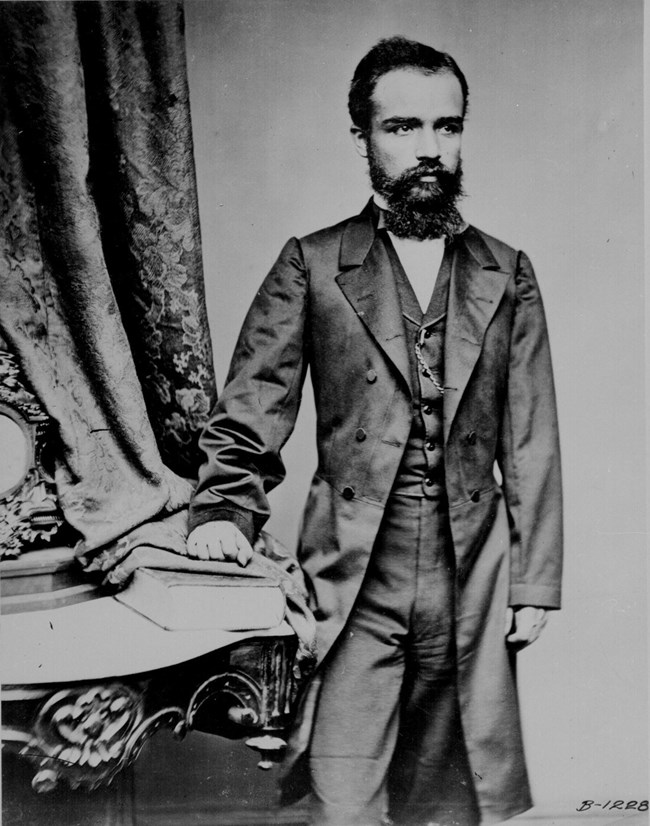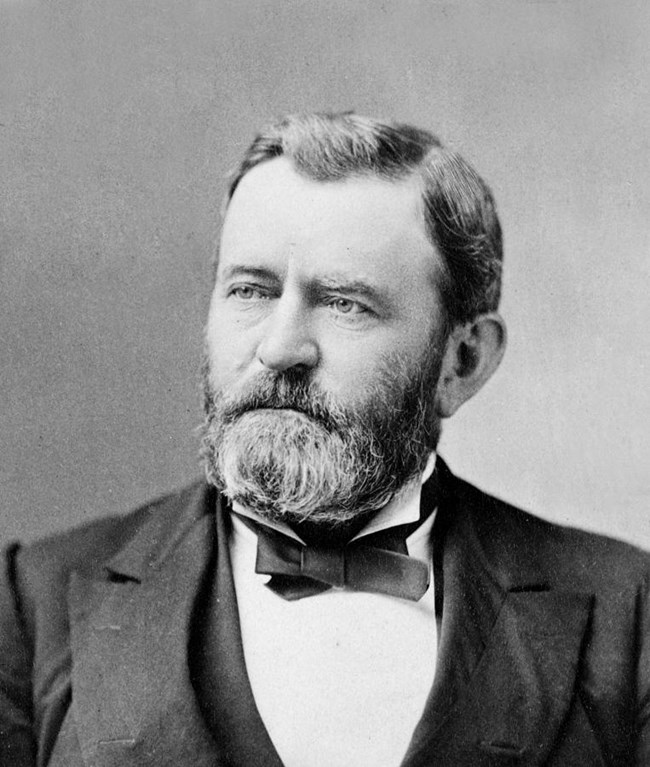Last updated: August 31, 2021
Article
Ulysses S. Grant, Matías Romero, and the Creation of the Mexican Southern Railroad
Thirty-Two years after leaving Mexico as a young army officer during the Mexican-American War, retired General and President Ulysses S. Grant returned to the country on February 18, 1880. This time he arrived not as part of a military operation, but as an ally who hoped to establish a cooperative, mutually beneficial relationship between the United States and Mexico. That day he addressed the citizens of Vera Cruz, Mexico, proclaiming, “I hope that relations between the United States and Mexico will grow closer every day. The development of this country will be a great advantage to the United States.” Amid the economic changes taking place in Mexico at the time, Grant was very interested in the development of railroads. This interest led him to assume his next presidency, that of the Mexican Southern Railroad. Working on him with this project was his old friend and the former Mexican minister to the United States, Matias Romero.

National Archives and Records Administration
Born in 1837 in the state of Oaxaca, Mexico. Romero was a protégé of Benito Juarez, the Mexican leader of the liberal forces who led an effort to expel the French government and their puppet, Emperor Maximillian, from Mexico. In 1861, Romero was sent to the United States to lobby US support against this French invasion. Even while fighting the Civil War, General Grant wished to expel the French from Mexico and worked toward that end while still General in Chief of US armies after the Civil War. Romero found a natural ally in Grant and the two developed a friendship. In 1866, Romero wrote to his superiors in Mexico, “we ought to make General Grant our confidant, express our wishes to him and seek his counsel.” Later, as Grant was elected President of the United States, Romero sent his congratulations. “I consider your election, General, as a blessing not only for the United States, but for mankind at large and for Mexico specially,” he remarked. Interested in expanding his country’s transportation infrastructure, Romero shared Grant’s enthusiasm regarding a railroad project in Mexico.
Grant believed that Mexican railroads would mutually benefit Mexico and the United States. He explained in a letter to Mexican investors, “the natural resources of Mexico warrant the execution of your project.” He asserted that the Mexican people were “sober, industrious and frugal.” Given the persistence of corruption and instability in Mexican politics, Grant argued that project would make the “periodical disturbances which have heretofore afflicted the country, wholly disappear.” Grant cited other benefits to the Mexican people, including employment for “many thousands of heads of families,” as well as opening up trade markets for production in “food, sugar, coffee, tobacco” as well as “articles valuable in commerce to make mines that are now practically inaccessible, valuable.” He concluded that the effort to build the Mexican Southern Railroad would provide “employment for all who chose to labor, and open fields for millions yet to come.”
The railroad project began on November 11, 1880, when Romero hosted a dinner attended by Grant and other railroad financiers in New York City. During this event, Grant made a speech outlining reasons to invest in a Mexican railroad. He described his personal interest in Mexico, remarking that “I had been there a good many years ago in the war which this country unfortunately had with Mexico, and I have always felt an interest in the country from that day to this.” This lingering interest of Grant’s pushed him to “seeing how possibly we might establish relations of friendship and commerce between the two nations.” During his speech, Grant reiterated the benefits of increased trade between the U.S. and Mexico. He also addressed the mistrust that the Mexican people felt towards the United States and tried to alleviate that tension. He recounted that Mexico’s loss of Texas and other territory as a result of the Mexican-American War has instilled a belief that, “they would be in danger of constantly losing territory.” Grant claimed that Mexican did not have to worry about American expansionist eyes toward Mexico any longer since the main cause for southern expansion into Mexico in the 1840s—slavery—was abolished. “The incentive [to expand slavery] being gone, ninety nine out of every hundred people in the United States . . . would be indignant at the suggestion of an acquisition of territory from a friendly power by any unfair means,” Grant argued. In his view, investing in railroads was not reflective of a desire to exploit Mexico and feed the appetite of American territorial expansionists, but simply to promote the economic interests of both countries. Later in his speech Grant touted what he perceived as the advantages that Mexico could gain from railroads, including employment, rapid transit, and the growth of new businesses. He concluded that investment in Mexican railroads “will accrue to the benefit of the United States more than to that of any other country except Mexico.” Mexico, he claimed, would benefit the most.

Library of Congress
By the end of the dinner Grant was appointed president of the consolidated railroad because of his “great ability to direct such a gigantic enterprise.” It was also thought that his good relations with Romero and Mexican officials would benefit the project. In March of 1881, Grant travelled to Mexico again. With Romero, he negotiated a charter for the Mexican Southern Railroad to go from Mexico City to Guatemala, with tracks going to both the Pacific Ocean and the Gulf of Mexico and finally linking together for a northward line to the United States. Romero worked with Grant to obtain cooperation from various officials within the Mexican states. Two months later on May 11, 1881, Grant signed a contract with Mexican authorities to construct the railroad, which was to be completed in ten years. During this time Grant communicated with President Chester Arthur and received his blessing to also work out a new commercial treaty with Mexico, who named Romero as one of its commissioners. The proposed treaty worked to remove tariffs on US and Mexican goods and establish free trade. It was signed in January 1883, but was defeated in the Senates of both countries as enemies pointed out that Romero and Grant had private business interests and were in it for their own gain. Grant denied the charge.
Despite this promising start, issues soon plagued the railroad venture. Various financial manipulations from investors, governmental bureaucracy, health issues from construction in low tropical areas, and an economic panic in 1884 all prevented the operation from having a smooth start. At one point, the Mexican Southern Railroad went bankrupt. Grant’s interests in the company ended when he faced his own financial problems at the end of his life thanks to a Wall Street market swindle, which in turn drove Grant to put his energies into writing his memoirs while facing inoperable throat cancer. Although he did not live to see it, the first part of the Mexican Southern railroad from Puebla to Oaxaca was opened in 1892, twelve years after Grant played a leading role in the project.
Further Reading
Osgood Hardy. "Ulysses S. Grant, President of the Mexican Southern Railroad," Pacific Historical Review 24, no. 2 (May 1955), 111-120.
John Y. Simon ed. The Papers of Ulysses S. Grant Volume 29: October 1, 1878-Septmeber 30, 1880. Carbondale, IL Southern Illinois University Press. 2008
John Y. Simon ed. The Papers of Ulysses of Grant Volume 30: October 1, 1880-December 31, 1882. Carbondale IL, Southern Illinois University Press. 2008.
Ronald C. White. American Ulysses A Life of Ulysses S. Grant. New York. Random House. 2016.
